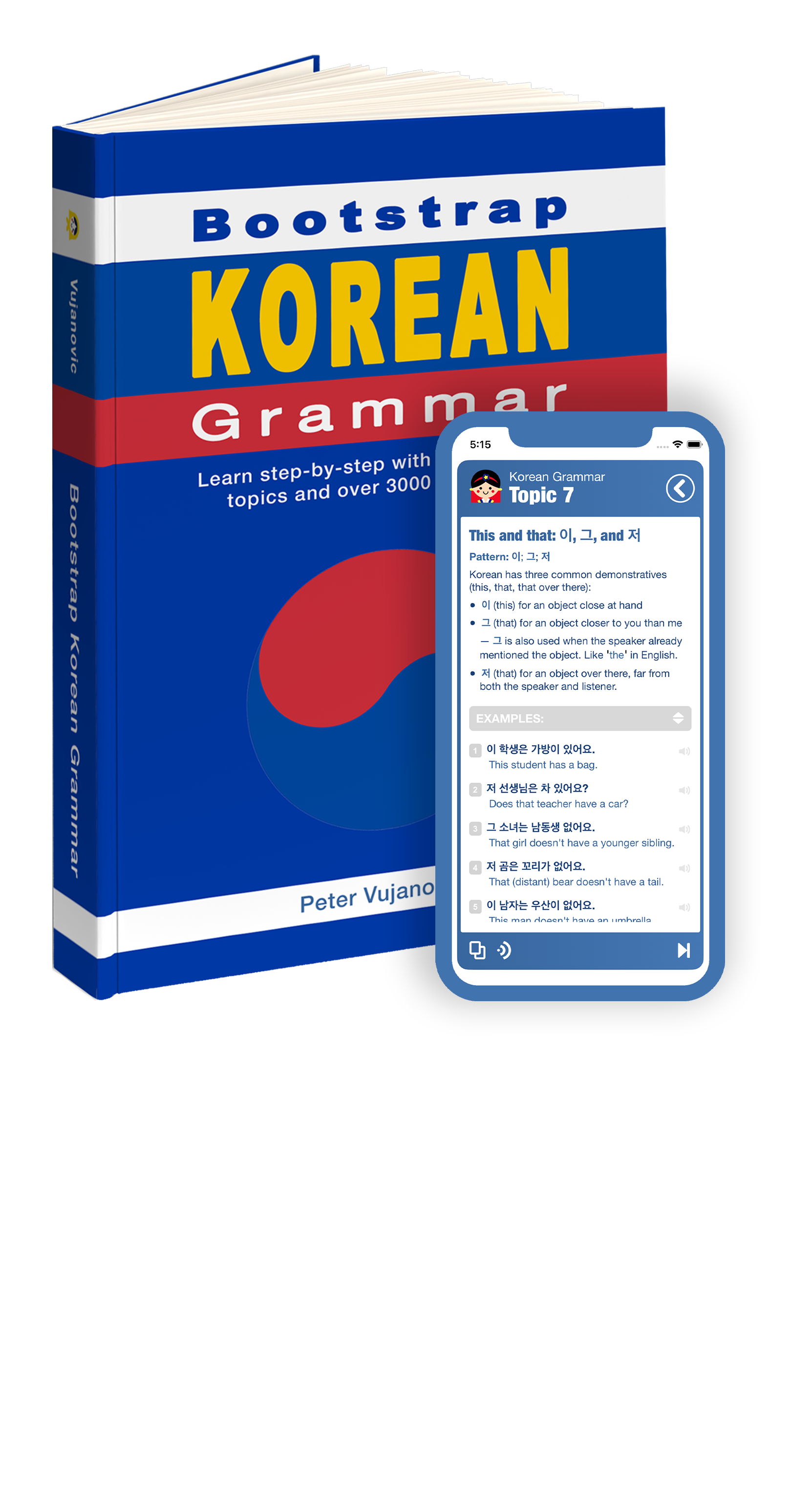Korean grammar - Adverbs from descriptive verbs - 게, 히 & 이 |
|||
|
|||
There are three ways to form adjectives from descriptive verbs in Korean: • Add 게 to the Verb stem. • For 하다 verbs change 하다 to 히. Adding 게 to the Verb stem is also often used for 하다 verbs. • Add 이 to the Verb stem. Which of these transformations is used depends on the verb - there is no consistent rules - the adverbs should be learned by heart. Note that many adverbs while appearing that they might, do not in fact have a corresponding verb and only have an adverbial form. -- These include 천천히 (slowly) and 함께 (together). |
| Examples: | |
|
저는 밥을 많이 먹었어요.
I ate a lot of rice.
|
|
|
저는 조용하게 먹었어요.
I ate quietly.
|
|
|
저는 거리를 안전하게 건넜어요.
I crossed the street safely.
|
|
|
저는 행복하게 살았어요.
I lived happily.
|
|
|
저는 가끔 너무 많이 먹어요.
I eat too much sometimes.
|
|
|
신중히 고르세요.
Choose carefully.
|
|
|
신중하게 하나를 선택하세요.
Select one carefully.
|
|
|
솔직히 말하면, 이것은 나에게 너무 복잡해요.
If (I) speak honestly, this is too complicated for me.
|
|
|
미나와 함께 하면 두 배 빨리 끝낼 수 있어요.
If (we) do it with Mina, we can finish it twice as fast.
|
|
|
학교 근처에서는 천천히 운전해 주세요.
Please drive slowly near the school.
|
|
|
병을 완전히 비울 거예요.
(I) will empty the bottle completely.
|
|
|
우연히 전 남자친구를 만났어요.
(I) accidentally met (ran into) my ex-boyfriend.
|
|
|
그 문제는 간단히 풀 수 없어요.
That problem cannot be solved easily.
|
|
|
우리는 콘서트에 대단히 실망했어요.
We were very disappointed with the concert.
|
|
|
조종사가 활주로를 분명히 볼 수 없었기 때문에 착륙할 수 없었어요.
(It) was not possible to land because the pilot could not clearly see the runway.
|
|
 |
|




